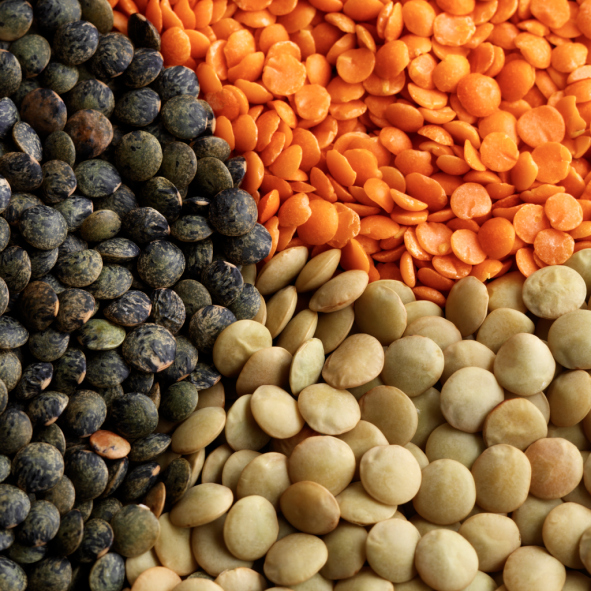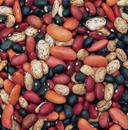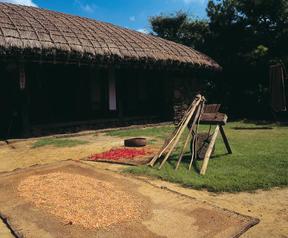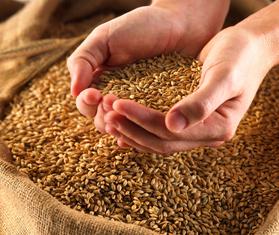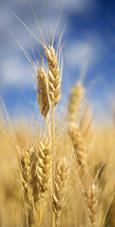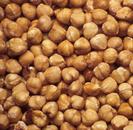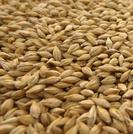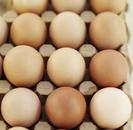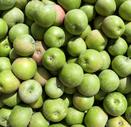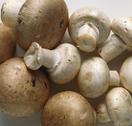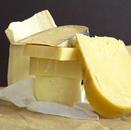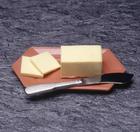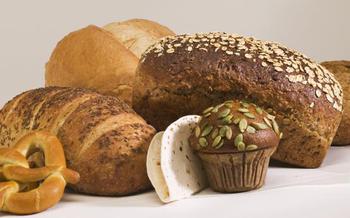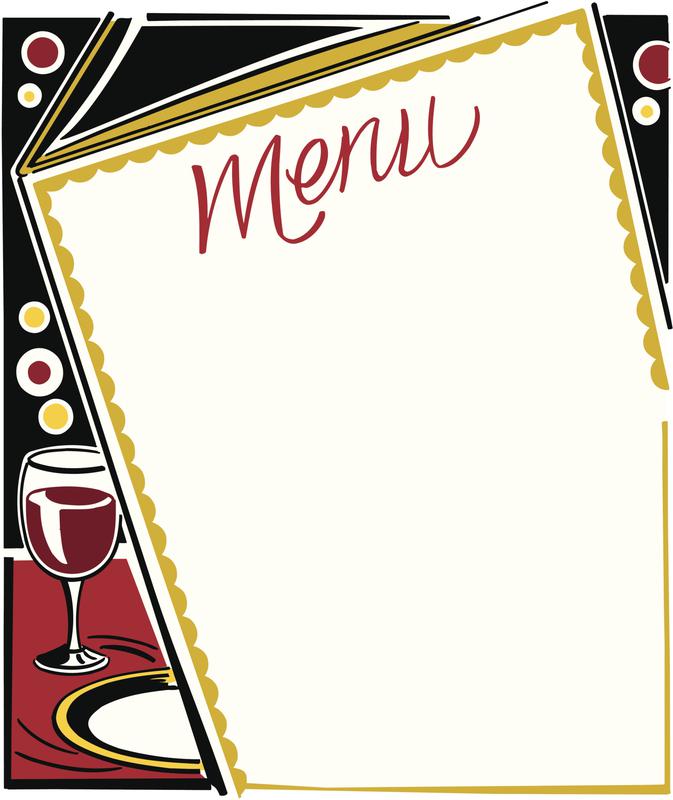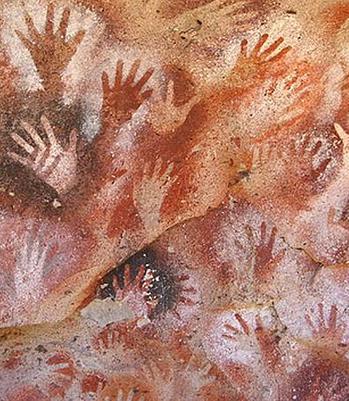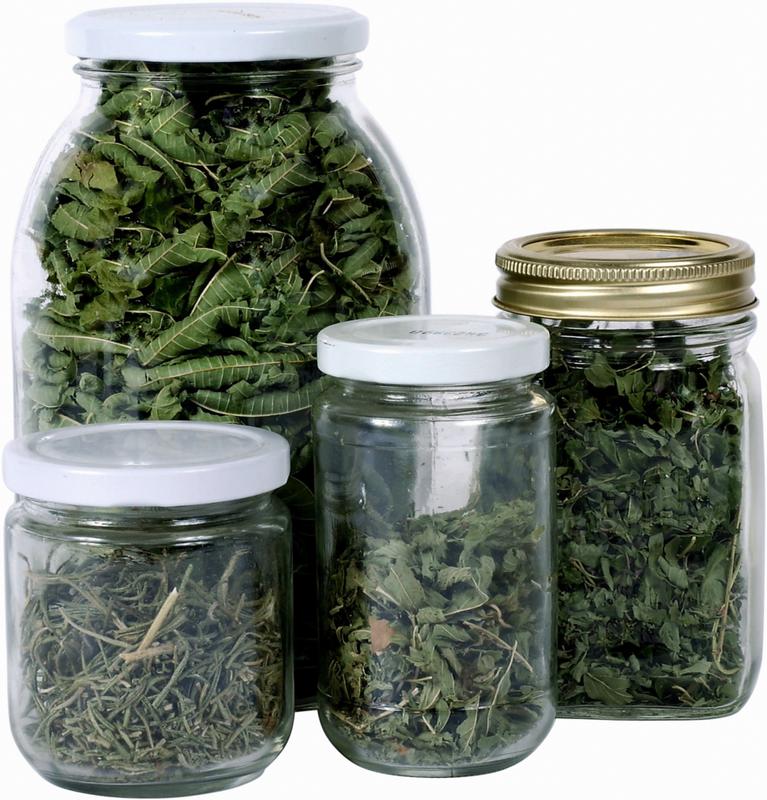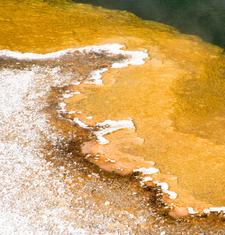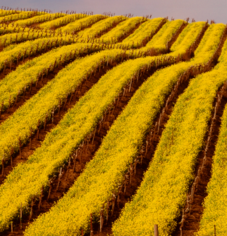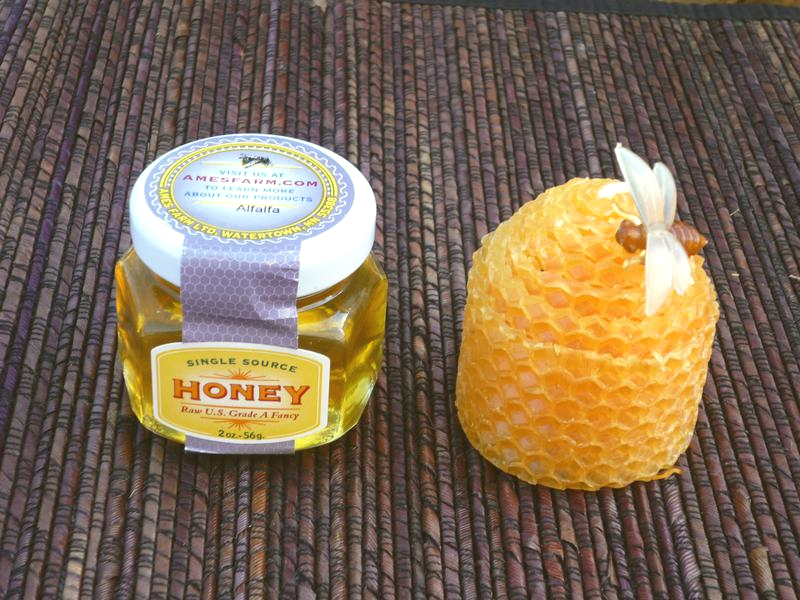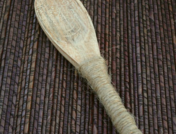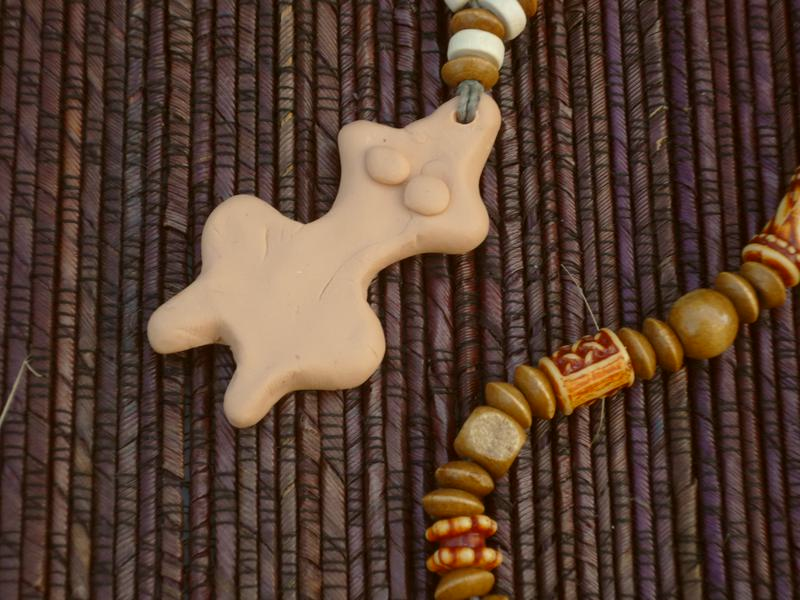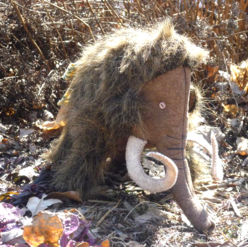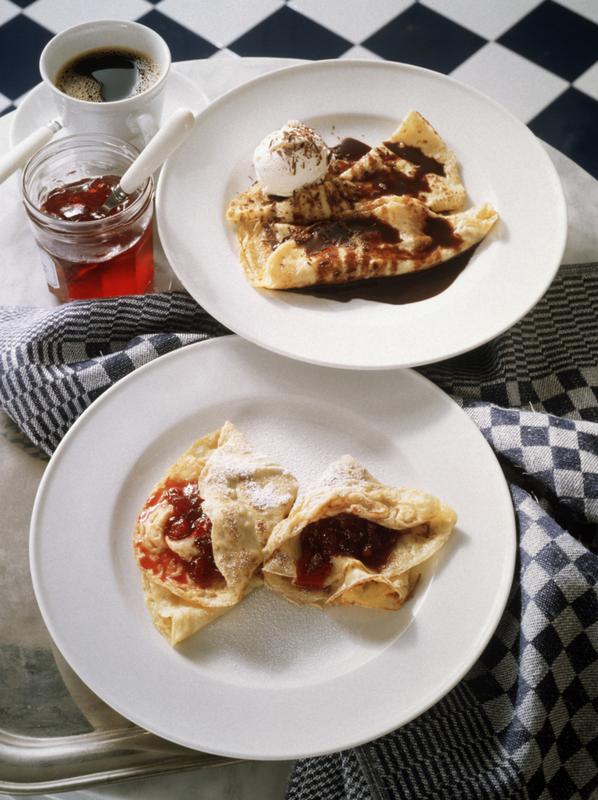Women's Travel Abroad
For Women About Women By Women
Activities
You Are Welcome to Contact Me Personally With Comments or Questions
Copyright 2017 Creative Travel Publications, LLC
Host a Neolithic Luncheon
With climate warming during the late Paleolithic, around 12,000 B.C., wild grasses began to cover large parts the European continent giving humans an alternative supply of food. By the beginning of the Neolithic period our ancient ancestors were cultivating, harvesting, storing, and cooking a variety of grains. Calories and carbohydrates from wheat and barley provided people with an additional source of energy.
They also domesticated wild legumes, beans, and animals. In addition to chickpeas and lentils pigs, sheep and cattle added much needed protein to the human diet. Between 8,000 and 3,500 B.C. our Stone Age ancestors transitioned to an entirely new style of life. Instead of relying on the food they hunted and gathered, growing of crops and tending of livestock became their primary way of obtaining edibles.
This new stone age, the Neolithic, led to radical changes in the social, economic, and spiritual lives of prehistoric people. No longer was it necessary to spend every day traversing the countryside in search of food. Daily life had a feeling of predictability and sustainability. Temporary, portable shelters were replaced by houses constructed as year round dwellings. Permanent communities developed as population grew. Property, skillfulness, and artistry became the indicators of status within the community and a social group.
Researchers use a variety of investigative strategies and techniques to determine what Neolithic people were consuming. Fragments of charred bone and seeds of grain from settlement trash heaps, food traces found inside clay pottery, and the stomach contents of preserved bog bodies all help scientists factually document food sources. Pollen analysis can show what plants were being grown at a particular site.
It is generally believed Neolithic people were responsible for clearing the forests of northern Europe to grow crops and pasture animals. However, Jacqui Wood reports in her book Prehistoric Cooking, something else may have been the cause of the deforestation. According to her, in the 1980's an environmental archaeologist discovered the remains of elm beetles at the West Spa site in Hampstead, England that actually predates the decline in pollen from Neolithic elm forests.
In modern times a plague of this same species of these ravenous, destructive beetles destroyed elm trees all over the world. In the city where I live elms were planted on the boulevards of many of the city streets. The stately, shade-providing elms arched over street after street. One morning I woke up to a loud crunching sound outside my house. In amazement I watched as an army of beetles devoured the succulent leaves of an entire block of elm trees in less than an hour. Having experienced this event it is easy for me to believe devastation like this may have also occurred ages ago.
Whatever caused the deforestation of Europe is still open to speculation. However, when it happened new forms of vegetation took hold including a rapid growth of large fields of grass which provided a seemingly endless amount of the grains we are familiar with today. These include wheat, rye, oats, and barley which humans proceeded to learn to grow from seed.
Along with the domestication of grains and beans archaeologists have also found flax seeds which prove this source of food and fiber was also being grown in Europe 9,000 years ago. Seeds from the flax plant can be processed into a nutritious flour or heart-healthy oil. The stems and leaves of the plant can be plaited into mats and baskets or woven into linen coverings and garments. Even today flax is a common part of our lives and is available in stores everywhere.
It should come as no surprise that this radical, albeit slow change, in life style required a host of new technologies. Archaeologists have found tools at sites all over Europe that attest to the creativity of Neolithic agronomists. Tools and implements were redesigned or invented to plant and harvest, process and store, prepare and serve these agricultural products.
Flint was polished for greater strength. It was attached, with sinew, to wooden handles and used to chop down trees creating land for planting and timber for housing construction. Animal horn and bone was fashioned into hoes to till soil and dig farrows for planting seeds. In the latter part of the Neolithic period people devised a new labor saving technology, the wooden plow pulled by oxen, which significantly increased food production.
During the Neolithic era emmer and elkhorn wheat and barley had much harder seeds than the strains of wheat we grow today. Unlike other animals, who eat the raw seeds from these plants, we do not have the right tooth structure or digestive system to break down and utilize the nutrients and carbohydrates in these grains. So after the grain was cut it was processed into a food source suitable for human consumption. Stalks of wheat were beaten or shaken to release their seeds. Seeds were then pulverized on a burin stone with a smaller grinding stone. The powdery remains of the continuous back and forth grinding of seeds, was mixed with a liquid, flattened into rounds, exposed to heat creating bread. Bread provided Neolithic people with a new, valuable source of food.
It contained the minerals calcium, iron, potassium, magnesium, and zinc for nutrition, antioxidants for increasing immunity to disease, and carbohydrates for energy. Bread was a healthy, tasty addition to the human diet. It also changed the way people stored and prepared of food. In the Paleolithic humans had already used treated hides of animals, baskets woven from bark, and dishes made of wood for storing and serving food. When grains were domesticated Neolithic people needed different containers and implements. Clay, a pliable silicate rock, was shaped by hand and air dried to make ovens for baking bread, bowls for serving porridge, and pots for storing grain. Wood was carved to create bowls for serving and spoons for stirring. Stone cutting tools continued to be used.
Early in the Neolithic clay was used to make functional pieces of pottery for domestic use. However, by the end of the Neolithic plain clay pots were decorated and became an expressive art form. Clay was coiled and molded, incised and engraved to create unique styles that have provided archaeologists with a means to date and track the development of Neolithic societies throughout the world.
Whenever a 'revolution' occurs there is a tendency to think everything changes very quickly. Rarely is this true. Although humans are highly versatile they still need time to acquire the necessary skill set to adapt and adopt. Also factors like climate, environment, resources, and attitude can affect when and how change will occur. Even now we can see people who still live an agrarian life similar to our Neolithic ancestors.
Mark Nathan Cohen (The Food Crisis in Prehistory, Overpopulation and the Origins of Agriculture, Yale University Press, New York, 1977) believes agriculture was not easier for prehistoric people than hunting and gathering nor did it provide a better quality of life. The main advantage of agriculture was it produced more calories from a plot of cultivated land and could better support the hungry needs of an expanding Neolithic population.
He also suggests prehistoric people had a very large range of food choices because they ate a varied diet of meat, grains, fruits, and vegetation. Yet, in spite of their versatile appetites, humans rarely used all the food sources available to them. Cohen maintains the food prehistoric people actually consumed was determined by cultural choices based on social class, nutritional needs, and taste preferences. Furthermore, human food choices usually varied from one geographical location to another and may have been affected by changes in weather and climate.
It is interesting that our modern day food preferences are subject to these same factors. Most of us choose to eat foods that are culturally proscribed and acceptable. As a matter of fact, our modern day food stuffs are simply new strains of wild plants, fruits, nuts, seeds, and animals domesticated during the Neolithic. The only real difference is almost everything we consume now is grown or raised on huge commercial farms rather than small subsistence plots of land. Of course, there are still some people who hunt and gather or grow gardens but many more of us dine in restaurants or purchase our food at stores and bring it to our homes to prepare.
However, some very interesting changes did occur regarding food in the Neolithic era. The Neolithic human diet shifted from their Paleolithic practice of eating food available only during certain times of the year or in a particular location to meals prepared from readily available food stuffs stored in containers. Dried grains, legumes, and beans could be eaten year round along with smoked meat from pigs and cattle, and fresh dairy products from goats and sheep.
Now I am able to plan the decor and menu for the luncheon. I can choose fruits, herbs, nuts, vegetables, and meat eaten during in prehistoric times and add them to the new foods of the Neolithic period.
Food can be grilled, roasted, baked, fried, or boiled. Ideally, the food would be served on dishes made of clay, wood, or woven fibers. We might even eat our food with spoons made from wood.
In keeping with the theme I want to serve some kind of bread. Today much of the bread we consume at meals is made with yeast. These airy loaves are made by adding yeast to milk, sugar, and flour. The dough is repeatedly kneaded and rested in a warm place until it rises high enough to bake in a heated oven.
Parisian crepes, sold on the street and in restaurants, are delicious. They are a simple mixture of flour, eggs, and milk. The batter is poured onto a large, circular, heated electric griddle. It is spread around to cover the entire cooking surface and flipped over to cook both sides to a golden brown. Street vendors typically lather the fragrant crepes with hazelnut and cocoa butter and stuff them with sliced bananas. The crepe is then quickly folded into fourths and wrapped in tissue. Piping hot the finished masterpiece is handed off to a hungry on the go customer.
Chefs in restaurants generally make their crepes in exactly the same way as street vendors. However, in a restaurant you usually have more choices in the way a crepe is presented and a larger choice of fillings. Crepes may be made of whole wheat or white flour and presented as open circles, folded, rolled, or stacked. You will probably find sweet and savory crepes on the menu with fillings made of fruit, vegetables, meat, cheese, and cream on the menu. The crepes will probably be served to you on an elegantly set table.
Now I am ready to put together the courses for my luncheon. I decide to have both savory crepes and sweet crepes. I will use whole wheat flour for the savory crepes and white flour for the sweet crepes. I have a tried-and-true recipe that works well for both kinds of crepes. Almost everything on the table will be food from the Neolithic period. However, I want to use a contemporary, heart-healthy oil instead of the traditional butter in the crepe recipe and for frying the batter.
I also want to have appetizers, a main course, salad, and desert incorporating wild and domesticated foods typical of both the Paleolithic and Neolithic periods. You will recognize most of the ingredients for the recipes as food we eat today. Prehistoric people hunted game, collected eggs and honey, and gathered vegetables, fruit, and herbs. Up until the Neolithic period everything humans ate would have been found in the wild.
APPETIZERS
Deviled Eggs With Poppy Seeds
Asparagus Wrapped With Smoked Ham
SOUP
Vegetarian Split Pea Soup
MAIN COURSE
Savory Buckwheat Crepes
Chicken or Crab, Spinach, and Mushrooms
Cottage Cheese
Sweet Honey Crepes
Strawberries, Raspberries, and Blueberries
Yogurt, Honey, and Hazelnuts
DESSERT
Granola and Apple Cobbler
BEVERAGES
Mint Tea
Honey Mead Beer
Fruit Wines
Martha Stewart's
CREPES
Savory Buckwheat Herb
3/4 cup buckwheat flour
1 cup all-purpose flour
2 1/2 cup whole milk
3 large eggs
5 tablespoons salted butter
Herbs of Your Choice
Sweet Honey Vanilla
1 3/4 cups all-purpose flour
2 cups whole milk
3 large eggs
1 tablespoon honey
1 teaspoon vanilla
5 tablespoons salted butter
Healthy Substitutions
Omit salt and honey
Use low-fat milk
Use heart- friendly oil
CLICK HERE for printable
copy of recipe
DIRECTIONS
TOOLS
Assemble measuring cups and spoons for dry and liquid ingredients, 2 whisks, sifter, large mixing bowl, small mixing bowl for eggs, medium bowl with handle and pouring spout, sieve, silicon brush for butter, ladle or large spoon, 2 spatulas, 8 or 12 inch non-stick skillet or griddle.
PREPARE BATTER
Sift flour and salt into a large bowl. Note: milk, eggs, and melted butter should be room temperature. Break eggs into small bowl and whisk whites and yolks together until combined. Pour milk into medium bowl. Add eggs, honey, melted butter, and flavoring to milk and whisk together.
Sift flour and salt into large bowl. Stir with dry whisk to separate flour. Slowly pour liquid mixture into flour mixture. Whisk constantly to combine all ingredients. Pour liquid mixture through seive and work out lumps with spatula. If making savory crepes add the herbs now and stir.
Cover with plastic wrap or a plate and let stand on counter for 15 to 20 minutes or refrigerate for 2 to 24 hours. Batter should be the consistency of heavy cream. Add more milk if batter is too thick. Pour batter through the sieve and break up lumps with spatula. A batter that is smoother and lump-free can be made in a blender or food processor.
COOKING CREPES
Heat skillet or griddle over medium heat. Brush skillet with butter or spray with non-stick oil to coat bottom and 1/2 inch up on side of pan. Ladle or spoon 3 tablespoons of batter for a small crepe. Pour from measuring cup 1/3 cup of batter for a larger crepe into pan. Turn and tilt pan to coat bottom of skillet evenly with batter. Cook until top of crepe appears set, bottom is firm and golden brown in spots, and center lifted by pockets of air, about 1 minute.
Run a spatula around edge of crepe to loosen. Slip spatula under crepe, and gently flip in one swift gesture. (If it does not land completely flat in the bottom of the pan, gently unfold it and rearrange it in the pan. Cook until the bottom is firm and golden brown in spots, about 45 seconds. Lift out of pan with spatula.
Transfer to plate and cover with towel. Repeat with remaining batter, brushing pan with butter or oil as needed. This recipe should make about 30 six inch or 15 ten inch crepes. You may serve the crepes immediately or store them in refrigerator to serve the next day. Remove your stack of crepes from refrigerator about 30 minutes before luncheon to bring to room temperature. You may also reheat each one separately in the a pan about 10 seconds or in the microwave for about 10 seconds until warm.
FILLINGS
I suggest you serve all fillings separately in bowls and let your guests make their own crepe combinations. If you have vegetarian guests they can omit the meat. For your Muslim or Jewish friends purchase halal or kosher chicken. Also for your vegetarian and Jewish guests definitely serve meat and all dairy products in separate bowls. If any of your guests have a gluten allergy substitute a thinner omelette for the crepe. For guests allergic to eggs you can substitute pita bread or naan. Fresh fruit is the healthiest choice but substituting jam is acceptable. Apple butter is a nice alternative. All substitutions are still in keeping with the Neolithic theme.
Instructive videos with alternative recipes and techniques are available on You Tube.
CLICK HERE for a printable copy of recipe instructions.
INGREDIENTS
2 cups dried peas (16 ounce package)
1 large onion, chopped
4 carrots, chopped
2 cups celery, chopped
4 garlic cloves, diced or smashed
2 cups vegetable broth
2 cups water
2 teaspoon poultry seasoning
1 teaspoon salt
garnishes - sour cream, fresh peas, croutons
DIRECTIONS
TOOLS
Sieve, knife, cutting board, measuring cups.
LARGE 6 TO 8 CUP CROCK POT.
PREPARATION
Examine dried peas for debris and stones. Pour into sieve and rinse with cold water. Layer peas, onion, celery, and carrots in the crock pot. Top with clove. Stir poultry seasoning and salt into vegetable broth and water. Pour liquid over the layer of peas and vegetables.
COOKING IN CROCKPOT
Place cover on crock pot. Cook on high for 5 to 6 hours or low for 9 to 10 hours. CHECK TO MAKE SURE NO LIQUID IS SPILLING OUT OF CROCK POT.
SERVING
This makes a very thick soup. You may add water or broth to soup after it is finished cooking to thin to desired consistency and taste. Garnish with dollop of sour cream, fresh peas, and croutons.
CLICK HERE for a printable copy of recipe.
YOU ARE INVITED
to a
NEOLITHIC LUNCHEON
DATE:
TIME:
PLACE:
ATTIRE:
RSVP:
CLICK HERE for printable copy of invitation
Thyme
Sage
Chevril
Mint
VEGETARIAN SPLIT PEA SOUP
Herbs were probably used in a variety of ways to spice up Neolithic cookery just as we do today. Caraway and mustard seeds added zest to savory and sweet dishes. Chevril and thyme enriched the flavor of meat stews. Horseradish, mustard, and garlic pepped up bland food. Mint and sage enhanced the flavor of both cold and hot beverages.
Salt was a highly sought after trade commodity in Neolithic times for seasoning and preserving food. It was dug out of underground mines like the ones at the site of Hallstatt, Austria. It could also be dehydrated from salty marshes or ocean water. Jacqui Wood says there is evidence salt was extracted from the ocean water on the Lizard Pennisula, Cornwall, England. Ocean water was repeatedly sieved through clay trays suspended, over a fire to evaporate the water, to form a hard block of salt.
Shoreline of Salty Ocean Water
Field of Domesticated Mustard
Another significant development during this time was the introduction of alcoholic beverages. The juice from cultivated grapes was allowed to ferment and age into wine. Malt from the domesticated barley grain was added to a variety of fruit juices creating ales and beers. Both wine and beer were also valuable trade commodities.
The only thing missing from the Neolithic diet is sugar. It is likely Neolithic people used honey as a sweetener. Honey was on the Paleolithic table and became a popular sweetener from the Bronze Age until modern times. Food may also have been sweetened with maple syrup.
Tea could be served in mugs and wine and beer in stemware made from clay. Although humans began drinking milk as a beverage during the Neolithic perhaps I will just have a pitcher on the table to use with the tea. Of course, I would like to have a colorful, tablecloth of linen, fiber place mats, and a bark vase filled with wild flowers.
Unfortunately, I can already see I will need to switch out some of this traditional Neolithic decor and food with products available in the 21st century. However, a lot of what we use today for serving dishes and the food we eat is similar to Neolithic food. The challenge for me is finding suitable decor and food at my neighborhood stores and markets that replicate or are similar to those from the Neolithic period.
In 1999 Dr. Mark Robinson, of the Oxford University Museum, used carbon dating to reexamine burnt material found at the archaeological site of Yarnton, Oxfordshire in England. Using radio carbon dating he discovered that burnt fragments from a rubbish pit, previously identified as burnt wood were actually the charred remains of risen barley bread from 3,500 B.C. His discovery proved yeast bread was being made, baked, and consumed during Neolithic times.
Nowadays we eat both flat and risen bread made from grain on a daily basis. Over the last thousands of years it has become a basic staple in almost every culture in the world. Many of us have eaten snacks and meals using both of these breads. For breakfast we may have eaten pancakes or a muffin. At lunch we might have had a sandwich made with pita bread or whole wheat roll. Some of our most popular dinner menus include tacos made from a flat bread dough and pizza made from a risen dough.
Most of us no longer prepare bread at home. We generally purchase it already made at a bakery, store, or restaurant. So for my menu I wanted to serve a bread that is easy to make and delicious to eat. I also want the bread to be adaptable to the dietary preferences of my guests. In assessing the all the choices I have available to me I decide to serve flat bread. Flat breads appear to be the 'go to' choice of people worldwide.
However, the first bread humans ate dates back almost 30,000 years to the late Paleolithic. Seeds found in a cave in France suggest this bread was a simple mash of ground grain and water that was cooked in sizzling animal fat on a hot, flat stone... the precursor to the flat breads we eat today.
Stone Saddle Burin and Grinding Stones
National Museum of Antiquities
Saint Germain en Laye, Paris
Clay Pottery, Flint Blades, and Wooden Utensils
In modern times cheese would also be served but a recent study that analysed the DNA from bones of people buried at a site in southern France suggests the people living during the Neolithic period may not have been able to digest dairy products. However, I am going to make an exception and serve cheese anyway. Apparently the gene for lactase persistence finally developed in central Europe by 5,500 B.C.
However, this finding may be specific to the site where this particular cemetery was found. Research at the Neolithic excavation site at Bercy near Paris, France suggests otherwise. From analyzing the remains of cattle teeth, also found in a rubbish heap, scientists hypothesize that the cattle there were used to supply both milk and meat for human consumption.
The researchers, Marie Balasse and Anne Tresset, used the growth patterns of cattle to determine the age at which they were slaughtered for meat. They found evidence in the bones and teeth of cattle of a high mortality rate for calves between the ages of 6 to 12 months old.
This could indicate calves were slaughtered very soon after they were weaned. This pattern of post-lactation killing of young calves would allow female cattle to breed and produce another nursing calf. With repeated calving excess milk from lactation could also be "harvested" for human consumption.
With all this information in mind you can see I have decided to put dairy products on the menu. I know from experience modern people are also lactose intolerant particularly to cow's milk. When my daughter was growing up had an allergy to cow's milk. Today it is possible to find other dairy products from goats, sheep, soy, and almonds that deal successfully with this problem.
If you decide to use this menu I encourage you to evaluate it for anything that could possibly cause physical distress or harm to your guests. I find guests appreciate it when I ask about what they can and cannot eat and inquire about their food likes and dislikes. As you read through the recipes please note I have also made suggestions to deal with issues of cultural and religious food taboos.
I have made the recipes myself and like them very much. They can be prepared ahead of time so you can enjoy the luncheon equally as much as your guests. The recipes are designed to be easily changed for your own dining preferences. The ingredients are generally available year round either fresh or frozen and relatively inexpensive to purchase.
SAVORY AND SWEET CREPES
The other dishes on the menu are relatively easy to prepare. To make the deviled eggs simply boil eggs in their shells in hot water until yolk is hard, carefully pour hot water into sink, remove eggs with a spoon, and cool on counter. When cooled peel away shell and throw it away. If you are having trouble removing the shell run the egg under cold water and try peeling again. Cut egg in half, use a teaspoon to pry yolk into bowl, and mash yolks with a fork. Mix mayonaise into mashed yolk. Then add mustard, salt, and pepper to taste. Put yolk mixture back in eggs with a teaspoon and sprinkle with poppy seeds.
For the asparagus wrapped with smoked ham (or salmon if you prefer) boil asparagus in hot water until tender but not limp. Remove asparagus from the water to cool and pat them dry with a paper towel. Wrap each spear with a slice of ham.
The dessert is made by alternating store bought granola and applesauce to create layers. Jacqui Wood, an expert in prehistoric cooking methods, has reconstructed a whisk which could have been easily made from wood available during the Neolithic period. As a matter of fact, it is almost exactly like the whisks we use today. You can buy a similar wooden whisk at your local gourmet cooking store or on the internet. A wire whisk will surfice. However, if you want to save time, an electric beater works even better. So why not go ahead and make your own. Top each cobbler with a large dollop of whipped cream. Generously sprinkle sunflower seeds on cobbler.
My design for the invitation to the Neolithic luncheon is based on two iconic prehistoric images - hand prints found in several Paleolithic caves in France and Spain and the carving of the Venus of Brassempouy. Up until recently it was generally believed the cave hand prints were made only by men but an extensive research project conducted by Dean Snow of Penn State University seems to prove otherwise. He measured each print for variation in size of certain digits. His comparative analysis of the measurements indicate the prints were made by both males and females. It is interesting to note Snow's research also revealed seventy-five percent of the prints were made by women.
Although the the Venus of Brassempouy, also called the Lady of the Hood (Dame a la Capuche), is from the Upper Paleolithic I simply cannot resist her charm. She was carved 25,000 years ago out of mammoth ivory by a Gravettian artist in the southwest of France. This particular Venus statuette was found in the Pope's Cave (Grotte de Pape) in 1894 near Brassempouy, Landes, France. She is only the size of a human thumb. Her face has slanted eyes, a prominent nose, and lacks a mouth. Her head is covered by a decorative hood which may represent plaited fiber or hair. To me she is one the most beautiful pieces of prehistoric art.
Setting a Neolithic table using contemporary products has been a fun challenge. I typically pick up things here and there, at inexpensive thrift and craft shops and hobby and dollar stores, for table decorations. I also use a combination of materials which includes paper, wood, metal, glass, and plastic. I usually try to find some party favors and a hands-on project for my guests to take home with them.
The woolly mammoth you see above is one of my creations based on the five baby woolly mammoths found frozen in the Arctic ice of Russia. The remains date back to over 30,000 years. The babies range in age from one month to ten years old. The oldest weighed two tons, stood almost ten feet tall, and was still covered with a layer of protective hair. A scientific exam of one of the youngest baby woolly mammoth revealed it had just nursed before it died. Another mammoth baby had eaten a meal of buttercups before it's death so that has become my woolly mammoths name - Buttercup.
The pile of stones came from a local garden store. I stacked them to resemble an early prehistoric monolith. Neolithic monoliths were generally upright stones sometimes incised with human features or symbols. The two most famous are the standing stones at Carnac in France and Stonehenge in England. The stone monolith decoration is very simple and easy to construct. The monolith is draped with a Venus statuette necklace designed as a thematic craft activity for your guests. Go to Activities and click on Make A Neolithic Necklace for a guide on how to make this necklace.
Next to the stones is a bark vase I picked up at a local thrift store. Any basket you choose would also work well for this luncheon. Baskets made of reed were used during the Neolithic to store all kinds of material objects and food products. I confess the basket is filled with artificial flowers. Obviously, fresh flowers are the ideal but I needed mine to be longer lasting.
The cotton table cloth is a mottled pattern of black, gray, and blue. The place mats and plate holders are made of twisted fibers. I was able to find wooden candle holders, salt and pepper shakers, and bowls. I found all these items at a thrift store. The napkin ring is made from a paper tube covered with burlap and tied with hemp thread.
Beverages and dessert can be served in a clay pots, decorated with a magic marker in traditional dot or geometric motifs, wrapped with hemp. The pots are lined with plastic cups. The plate holder is lined with a paper plate. You may choose wooden spoons and forks for eating food. I added a decorative spoon for ambiance. However, I prefer to use utensils made heavy duty plastic, stainless steel, or silver because it is more sanitary and easier to clean.
For this luncheon I purchased small jars of honey, beeswax candles, and packets of carrot seeds as favors. The activity is a simple necklace made of Fimo clay, wooden beads, and string. You may click here for a supplies list and directions to make the necklace. The favor box is available at most craft stores.
In the last ten years some nutritionists have advised humans begin eating foods similar to what paleolithic people ate. In essence, this means eliminating all carbohydrates from your diet leads to a healthier life. However, the carbohydrates in grain and legumes provide humans with a stable and necessary source of both energy and protein.
Grains and legumes were introduced during the Neolithic period as a valuable alternative to the diminished availability of wild food products and increased global population of homo sapiens. Also, during the Neolithic period cultivation of plants and domestication of animals lead to innovative technologies devised to harvest, prepare, and store these new food products and the agricultural revolution began.
I hope you enjoy doing this project. I would like to see photos of your luncheon. Please send photos to my email with the message: my Neolithic luncheon, OK to publish photo and text. For the security of my computer and your computer I will not open an attachment without this information and exact wording.
HAPPY COOKING
PLEASE NOTE
I have made every effort to ensure all of the information on this page is accurate. However, due to differing conditions, tools, and individual skills I cannot be responsible for any injuries, losses, and/or any other damages which may result from the use of the information on this page.
This activity is not suitable for children or people with allergies to any of the ingredients.
PLEASE BE ADVISED
It is imperative you use the proper safety gear and handle tools carefully while doing this project.

